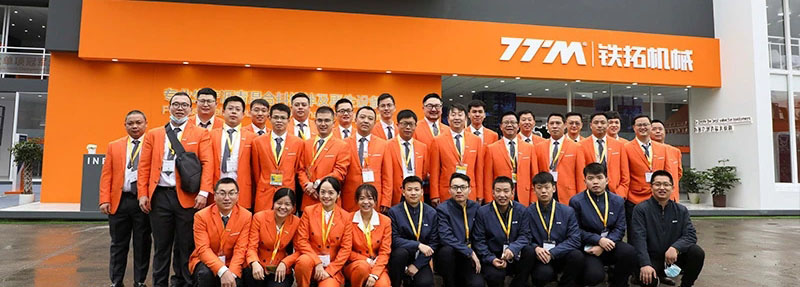Why Asphalt Plant Types Matter—Especially When Margins Are Tight
Pick the wrong asphalt plant types and you are stuck with a million-dollar conversation no one wants to have on site. Choose correctly and you will hit daily tonnage targets without burning through fuel, manpower, or—let’s be real—your sanity. This guide walks you through the four mainstream asphalt plant types, their hidden costs, and the single question most buyers forget to ask.
Batch Plants: The Swiss Army Knife of Hot Mix
Batch plants still dominate city work because every drum rotation can be tweaked for a different mix design. Need 15% RAP on the first shift and a porous friction course after lunch? No problem—just adjust the weigh hopper and you are golden. The downside? Each batch runs through a drying/heating cycle, so your output tops out around 140 t/h unless you upsize the dryer. If your annual demand is below 150 k tons, the flexibility outweighs the slower speed.
Quick math tip
Take your projected tonnage, divide by 2,000 operating hours, and add 15% buffer. If the result is under 100 t/h, a mid-sized batch plant will pay for itself in under three seasons—promise.
Drum Mix Plants: Continuous Flow for the Long Haul
Drum mix plants erase the “stop-and-go” of batches, pushing 300–500 t/h on a good day. The magic happens inside the tilted, rotating drum where aggregate, RAP, and bitumen meet in a single, uninterrupted stream. Because there are no screens to re-feed, you save 6–8 kWh per ton of mix—enough to cover a foreman’s annual salary in power costs alone. The catch? Recipe changes take longer, so drum mix plants are best when you are paving 50 km of highway or feeding a 24/7 paving train.
Mobile Asphalt Plants: Profit Where the Potholes Are
Mobile asphalt plant types look like shipping containers on wheels, but they can churn out 40–120 t/h. Government bids love them because you can drag the unit from county to county and slash cold-lay patch costs by 30%. Set-up is typically two cranes and one long day; teardown is even faster. The gripe? You trade longevity for portability—expect a 10-year service life versus 25+ for stationary cousins. Still, if you chase remote wind-farm projects or disaster-relief work, mobility beats longevity every single time.
Stationary vs. Relocatable: The Middle Ground Nobody Talks About
Between true mobile and full stationary lies the “relocatable” class. These asphalt plant types sit on containerized skids that bolt onto a pre-cast concrete slab. You get 200–300 t/h production with the option to disassemble and reinstall elsewhere within six weeks. Translation: you can follow a five-year highway corridor without writing off the capital. Most buyers overlook relocation fees—budget roughly $150 k for crane, freight, and re-commissioning each move.
How to Read an ROI Curve in 90 Seconds
Grab the plant price, add freight, foundation, and electrical, then divide by lifetime tonnage. If the per-ton cost is under $2.50 and local bitumen pricing is stable, you are in the green zone. Anything above $3.20 means you need either higher volume or a cheaper fuel source—maybe a natural-gas line running alongside the property. Oh, and don’t forget to negotiate an extended wear-parts contract; liners and flights can eat 8% of revenue if you’re not careful.
Environmental Stick: What Regulators Actually Check
Baghouses matter, but stack opacity is the photo regulators snap. Drum plants with counter-flow dryers hit 20 mg/Nm³ without secondary injectors, while older parallel-flow units can spike past 70 mg. If your quarry sits in an EPA non-attainment zone, the difference is the permit that gets approved versus the one that sits on someone’s desk for 14 months. Add a fiber-filter sleeve and you can knock another 5 mg off, which—trust me—keeps the nearby school board from writing angry letters.
Transition: From Specs to Site Reality
By now you have spreadsheets full of tph, RAP %, and kWh. But specs never tell you how a plant behaves at 5 a.m. when the ambient is –5 °C and your loader guy called in sick. That is why the next section focuses on the “human factor” and why some asphalt plant types are more forgiving than others.
The Human Factor: Which Plants Forgive Operator Error
Batch plants with outdated DOS panels punish new operators—one mistyped recipe code and you have 20 tons of scrap. Modern touch-screen systems auto-lockout if moisture readings drift outside 0.5%. Drum mixers, on the other hand, are more forgiving; once the feed rate stabilizes you can walk away for ten minutes without the mix going sideways. If high turnover is your norm, factor in training hours: drum plants save roughly 40% on onboarding time, which translate to real dollars when you are paying scale wages.
Used vs. New: The 7-Year Sweet Spot
A seven-year-old batch plant from a northern climate often has 30% of its life left but sells for 35 cents on the dollar. Inspect the trunnions, gearbox backlash, and burner diffuser plate. If those three pass, you can flip the plant after your five-year project and recover 60% of your purchase price. Just remember to ask for the maintenance log—no log, no deal, no exceptions.
Final Nugget: The One Question Every Buyer Forgets
Before you sign, ask the OEM: “What is the parts lead time during peak season?” If the answer is over four weeks, budget an extra $25 k in critical spares on day one. Trust me, waiting on a custom 42-inch dryer shell in July is the kind of headache that keeps owners awake—and eats paving schedules alive.

